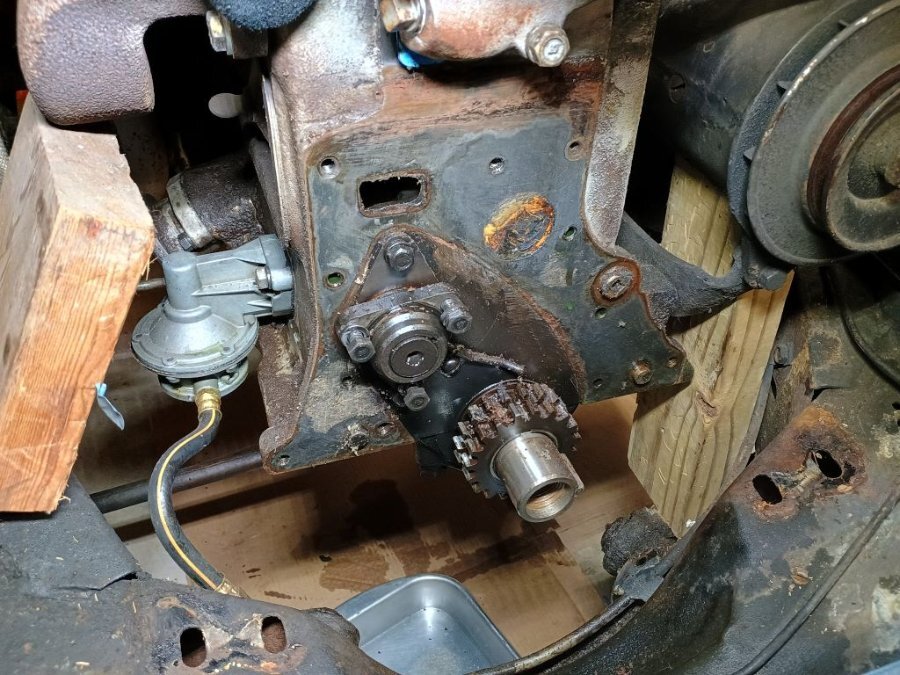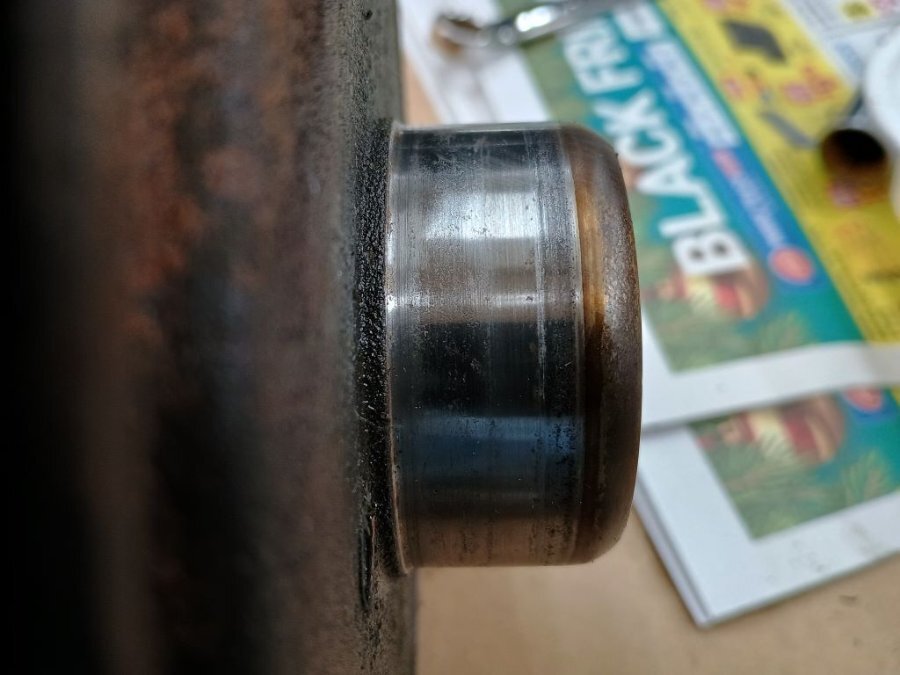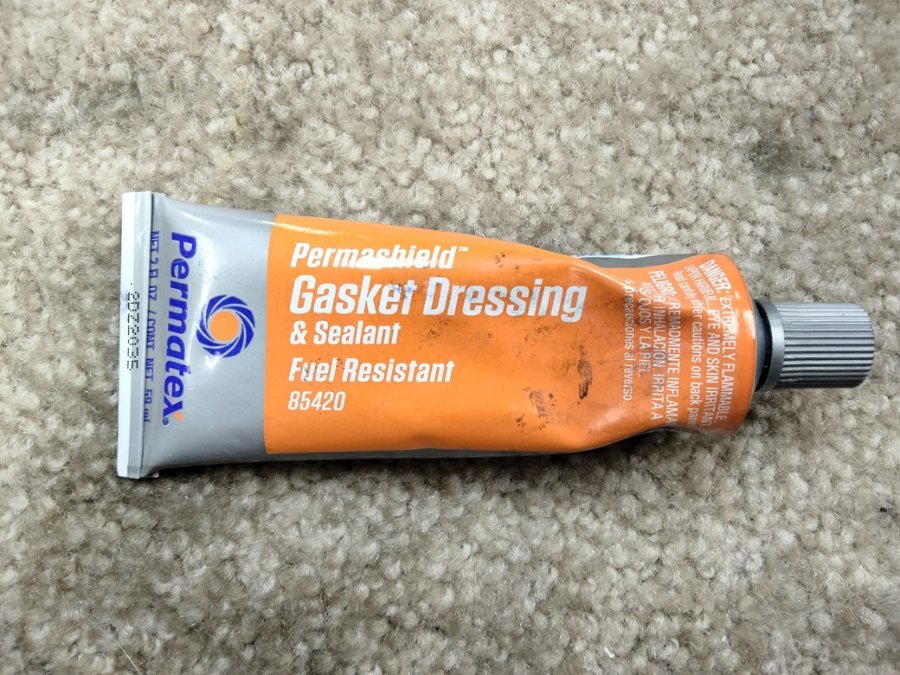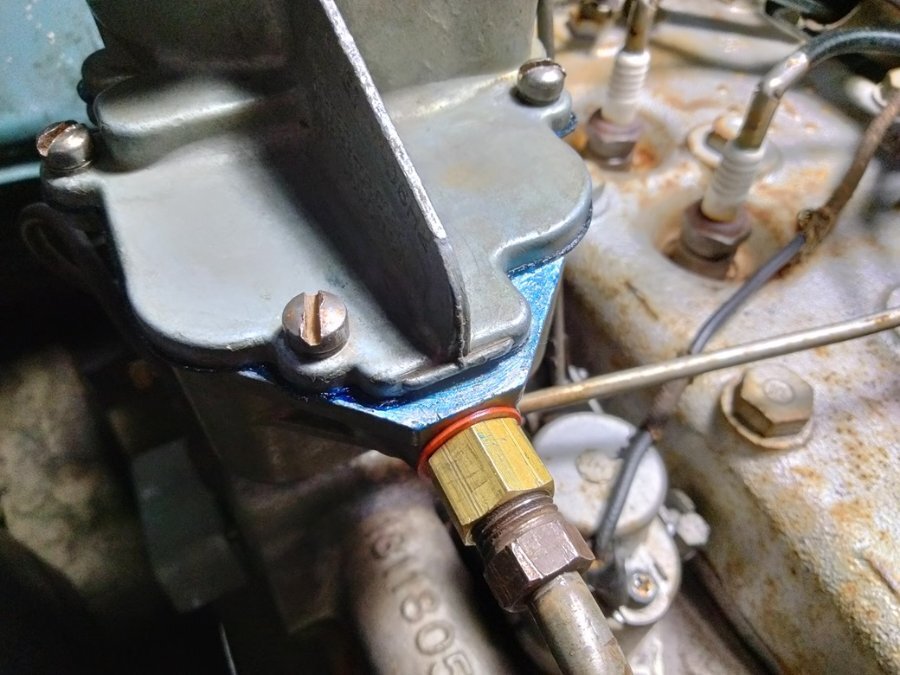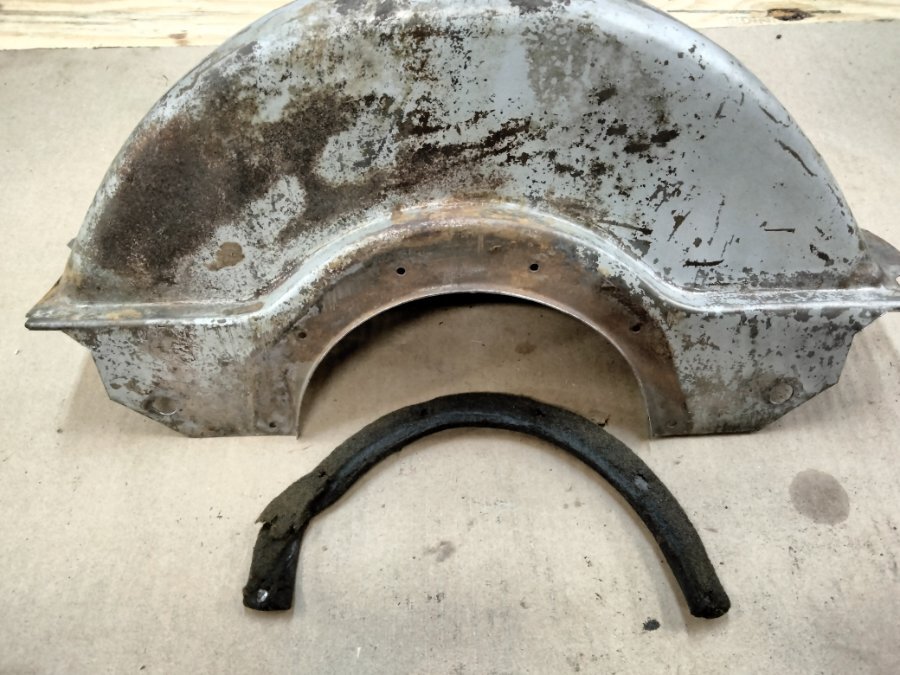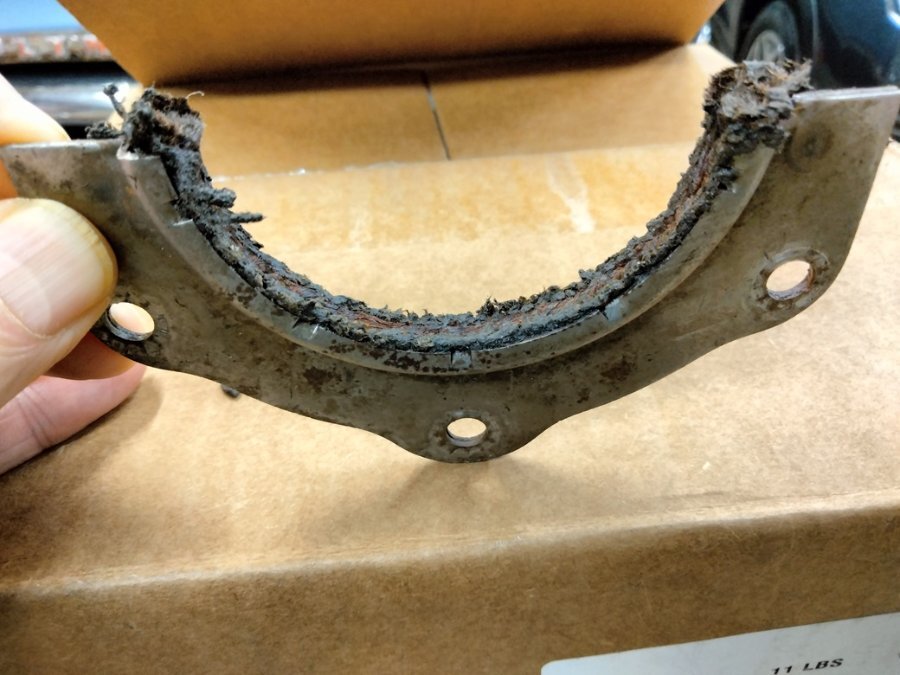-
Posts
98 -
Joined
-
Last visited
-
Days Won
3
Content Type
Links Directory
Profiles
Articles
Forums
Downloads
Store
Gallery
Blogs
Events
Everything posted by motoMark
-
Since I was in there, I figured I'd replace the front engine plate gasket in case that was contributing to my leak. Also, when I did the oil pan gasket last winter, I didn't replace those little rubber seals on the plate package, so that will get done too. Do you guys think it would be ok to reuse the oil pan gasket since it was just been replaced? It looks fine. And the sealing surface on the hub looks good so I don't think I'll need a speedi sleeve
-
Thanks, guys. Never thought about possibly needing a speedi-sleeve. 👍
-
As much as really I don't feel like doing it, my leaking timing cover gasket needs replacing. It looks pretty straightforward. I already removed the radiator, fan and water pump pulley. The front motor mount will have to come off. The manual says to lift up the engine in order to remove the crank pulley/hub, which I assume is to make room for the hub puller. The exploded view in the manual also shows a "jaw" and "washer" in front of the hub, so I'm guessing the jaw is the bolt/nut that holds the hub on? Is this correct? For anyone that's done this job before, any tips or tricks would be most appreciated. Thanks
-
The reason I applied the sealer to float bowl gasket surface as well was to hopefully prevent gas from pooling on that surface. In a normal situation I would not do that, but this situation is certainly not normal 🤪
-
Update on the carb weep situation. Over the weekend I bought the sealer I mentioned earlier and applied it to both sides of the gaskets as well as a thin coat on the gasket surfaces. The instructions say to wait until the solvent flashes off before you assemble the components, so that's what I did. It was a little tricky applying the sealer on the carb itself because you don't want to plug up any air passages or leave any big blobs. But I was careful not to do either of those. Slapped it all back together, bolted it to the engine and fired it up. So far it seems ok. I've run it a few times up to and at operating temperature, and I don't see any puddling where I saw it before. I'm hesitant to say it's all fixed, but I'm happy with the overall results with the sealer. Once I get a chance to drive it, I'll hopefully have a better idea whether it's fixed or not. But for now, I'll call it a win.
-
Not yet. But I see Permatex makes a fuel resistant gasket dressing/sealant, so I think I'll give that a try.
-
Back to the gas issue. After I started and ran the engine for a few minutes, I saw some gas pooling in the now usual places around the airhorn gasket and adjoining surfaces, as expected. I also saw some wetness down below on the gasket between the carb body and the lower spacer plate. At that point I figured I'd just take the damn carb off and have a look at in on the bench. Gradually I took the carb apart (airhorn, spacer plate, throttle plate) while looking for anything obvious. Didn't notice anything. So I'm left with the float bowl in my hand, which still has gas in it. Removed the float, accelerator pump and the jet/needle assembly thing and set the bowl on the bench. The top gasket surface of the float bowl is still wet so I wipe it off repeatedly. And repeatedly it becomes wet again. Then I dumped the gas out of the float bowl and dried it out with compressed air. The inside walls of the float bowl look kind of rough in my opinion, and seem to have a fair amount of pits and voids (see photos). Granted, I know the surface isn't supposed to be precision smooth, but they look rougher than I expected. Then I took some fresh gas and poured about 1/2" of it into the bowl and watched. You'll notice in the photos how dry and almost chalky the float bowl looks. Well, as I'm watching it, I see the gas wicking it's way up the walls of the float bowl. Not fast, but it's happening. There is a distinct "wetness line" creeping its way up the walls. Eventually I see gas pooling again on the top gasket surface. So by everything I've seen, I have to conclude that the casting is porous. Maybe it was ok when it was made, but over time deteriorated? I don't know. I think it's new carb time.
-
As far as I know it's OEM, but not 100%. I bought the car with 29K miles on it, so I think a lot of it is original. Haven't had a chance to get back into fuel leak yet but will provide updates when I can.
-
That is correct.
-
-
I took a quick look at it tonight (cold) and it looks a little damp but not like it was when I took the photo (warm) . Will have to investigate the conditions further.
-
I do! Probably tomorrow I'll have time to take a few pics and will PM you.
-
Kind of sounds like an exhaust leak to me.
-
Maybe I didn't describe the condition as clearly as I could have. If you look at the photo above, it shows gas puddling on the horizontal surface of the carb body. As you see it, without the top of the carb installed, I wipe that surface dry with a shop towel and the gas slowly reappears. You can see it as it happens. So no matter how many times I wipe it dry, the gas eventually comes back and puddles on that flat surface.
-
I wouldn't believe it if I hadn't seen it with my own eyes. After rebuilding the carb on my 51 Cambridge, taking plenty of time to clean and make sure everything was adjusted correctly, I installed it back on the manifold and got the old girl running. She was running real nice but I noticed a little gas where the top (air horn) attaches to the body. Ok, so I tightened the 4 screws a little more and figured I'm good. Then the gas came back again. Hmm. Did I set the float level too high? Off comes the top and double check the float - good, and look for any other potential issues. The top goes back on. Fire it up, same thing. Really weird! I take the top back off and stare at the float and all the other parts for a while. Nothing comes to mind. I wipe all the top horizontal surfaces of the body with a shop towel and they are dry. As I'm watching, I see moisture forming on those same surfaces I just wiped down. Did it again and again with the same result. What the heck is going on? I have never seen this before. Any ideas or experience with this sort of thing? I'm totally perplexed.
-
Luckily my float is ok. Nothing sloshing around inside and floated in a cup of water overnight with no issues.
-
Ever since I got the car in 2022 I noticed a little wetness on the throttle plate of the carb. Nothing bad, in fact it looked kind of oily, not gas. So tonight I thought I'd take the carb off and have a look. Much to my surprise I found a pretty substantial puddle of gas on the floor of the intake manifold. Has anyone ever come across this before? I know the needle and seat, float, and float level need to be checked once I get the carb back together, but its there anything else I should look for? Thanks, Mark
-
Interesting. So does this mean that the oil filter housing sees up to 40 - 45 psi until the bypass valve opens? It looks like my filter housing lid gasket is leaking and wasn't sure how much pressure is in there.
-
While replacing the oil pan gasket and lower rear main seal, I noticed the oil pump housing plate was leaking and figured I'd tackle that too. And since I was doing that, why not remove the whole pump and replace that gasket too. To my surprise, I can't get the pump out. The pump shaft drive gear doesn't clear the block before the housing hits the frame rail. So it looks like there is no way to remove the pump unless I somehow shift the engine over towards the drivers side. Seems kind of odd. Am I missing something?
-
Has anyone ever replaced one of these felt-type seals on the flywheel inspection cover? It seems to me that it's only there to catch any errant drops of oil leaking from the rear main seal or the back of the oil pan. I suppose I can just clean and reinstall.
-
I did notice there were side seals in place when I removed the cap and will definitely be replacing them when I do the lower seal.?
-
-
I pulled the rear main cap and confirmed it is a rope seal. Because the rope seal is "crimped" into the retainer, I don't see how it can be replaced without removing the seal retainer, which means removing the flywheel, which means removing the trans. And I really don't feel like pulling the trans at this point. So I'm going to stick to my original plan and replace just the lower seal. If it leaks after that, well, then I guess that will be next winters project.
-
Yes, same as the profile.


